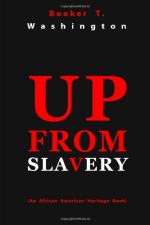It was while my home was at Malden that what was known as the “Ku Klux Klan” was in the height of its activity. The “Ku Klux” were bands of men who had joined themselves together for the purpose of regulating the conduct of the coloured people, especially with the object of preventing the members of the race from exercising any influence in politics. They corresponded somewhat to the “patrollers” of whom I used to hear a great deal during the days of slavery, when I was a small boy. The “patrollers” were bands of white men—usually young men—who were organized largely for the purpose of regulating the conduct of the slaves at night in such matters as preventing the slaves from going from one plantation to another without passes, and for preventing them from holding any kind of meetings without permission and without the presence at these meetings of at least one white man.
Like the “patrollers” the “Ku Klux” operated almost wholly at night. They were, however, more cruel than the “patrollers.” Their objects, in the main, were to crush out the political aspirations of the Negroes, but they did not confine themselves to this, because schoolhouses as well as churches were burned by them, and many innocent persons were made to suffer. During this period not a few coloured people lost their lives.
As a young man, the acts of these lawless bands made a great impression upon me. I saw one open battle take place at Malden between some of the coloured and white people. There must have been not far from a hundred persons engaged on each side; many on both sides were seriously injured, among them General Lewis Ruffner, the husband of my friend Mrs. Viola Ruffner. General Ruffner tried to defend the coloured people, and for this he was knocked down and so seriously wounded that he never completely recovered. It seemed to me as I watched this struggle between members of the two races, that there was no hope for our people in this country. The “Ku Klux” period was, I think, the darkest part of the Reconstruction days.
I have referred to this unpleasant part of the history of the South simply for the purpose of calling attention to the great change that has taken place since the days of the “Ku Klux.” To-day there are no such organizations in the South, and the fact that such ever existed is almost forgotten by both races. There are few places in the South now where public sentiment would permit such organizations to exist.
Chapter V. The Reconstruction Period
The years from 1867 to 1878 I think may be called the period of Reconstruction. This included the time that I spent as a student at Hampton and as a teacher in West Virginia. During the whole of the Reconstruction period two ideas were constantly agitating in the minds of the coloured people, or, at least, in the minds of a large part of the race. One of these was the craze for Greek and Latin learning, and the other was a desire to hold office.




